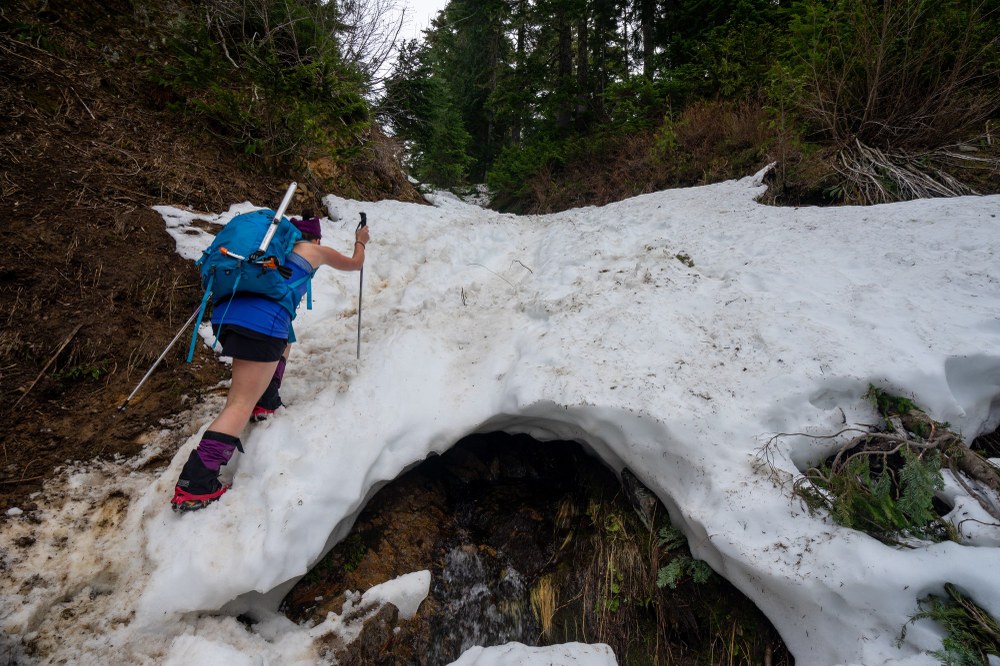
Last Sunday, search and rescue teams responded to an emergency call from a popular early-season climb in the Olympic mountains. Two climbers slipped on a steep snowy slope while climbing The Brothers. One fell “into an opening in the snow and over a rock face with running melt water,” and sadly did not survive. This tragic accident has brought an annually recurring hazard back into the thoughts of everyone within the outdoor community: the danger posed by snow bridges.
Last year, a man was killed while hiking to Gothic Basin in July when a snow bridge collapsed, crushing him under the weight of ice and rock boulders. And no one can forget the famous incident in 1998 when a person glissading Aasgard Pass in the Enchantments fell into a 30-foot hole and had to dig himself out. These incidents help explain why snow bridges are one of the most feared and dangerous hazards mountain-goers can encounter in the spring and early summer months.
what is a snow bridge?
Most people associate snow bridges with glacier travel. The common photo involves a climber crossing a sometimes narrow band of snow over a large crack in the glacier.
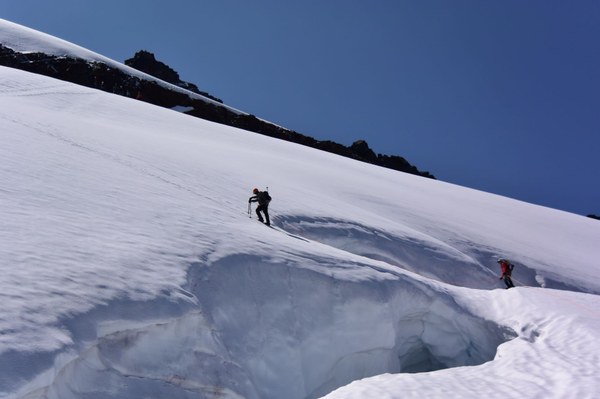 Climbers crossing an obvious glacier snow bridge. Photo by Chenmin Liu.
Climbers crossing an obvious glacier snow bridge. Photo by Chenmin Liu.
However, snow bridges can form almost anywhere, including on low-elevation hiking trails. Snow bridges don’t necessarily have to form an actual bridge, but can instead be an unseen gap below which the snow has been melting. Often, these openings are directly over water features like creeks, rivers, and alpine lakes, but they can also form over rock piles or dirt.
Sometimes you can see evidence that a snow bridge is present, either by seeing the bridge itself or holes in the snow which show the gap between the ground and snow level. These can help give a visual clue when you may be standing on top of a snow bridge.
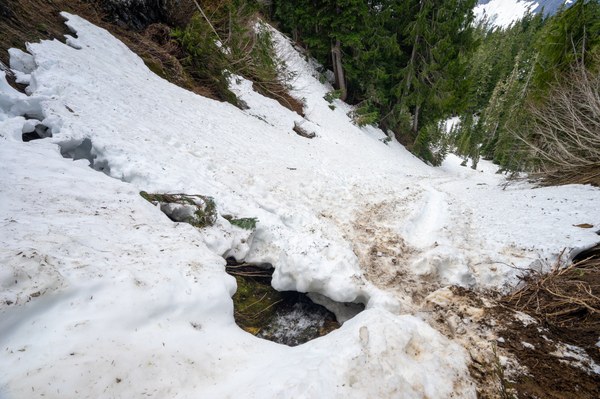 Snow bridge with glissade path. Photo by Nate Brown.
Snow bridge with glissade path. Photo by Nate Brown.
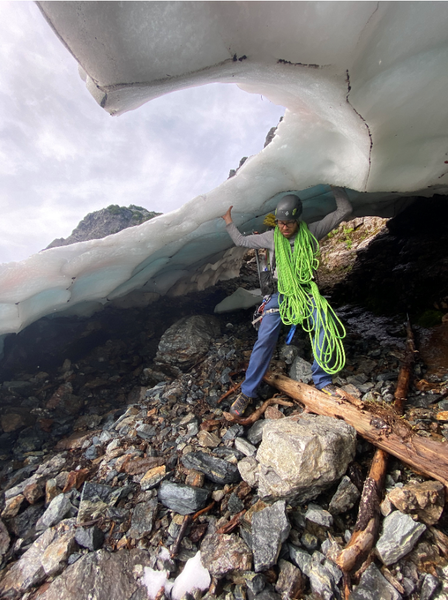 Under a snow bridge on Mt. Shuksan. Photo by Parker Tikson.
Under a snow bridge on Mt. Shuksan. Photo by Parker Tikson.
But what about when you can’t see any evidence of a snow bridge? Pay attention to your surroundings and look for other clues:
- Can you hear running water, yet can’t see the source? That’s a red flag that you may be near or on a snow bridge.
- Do you see a slight depression in the snow, like the snow is sagging down, running in a line. This is another red flag that the snow is sinking faster than its surroundings, which could indicate a gap.
- Be aware of your location using a map or GPS device. Note the blue water lines and when you are approaching them.
How do you cross a snow bridge?
- Don’t. Find a safer way around it rather than risk it, or, if that's not an option, turn around and come back later once conditions have improved. Make sure you snap a photo and post a trip report so others can be aware of the dangerous obstacle and choose a different hike until it's safe.
- If you’re roped up (this applies to those who are on a glacier), set up a quick belay while each climber crosses it one at a time.
- Test the integrity of the bridge by poking at it with a hiking pole. Also look at the features of the bridge: if there’s water flowing under it, where does the current lead to? If you fell into it, would you have trouble climbing back up the steep snowy walls?
- If you must cross it, do it one person at a time. Move quickly through it and get well beyond the danger area before the next person crosses.
Another thing to note about snow bridges is to not let previous tracks trick you into complacency. Just because you can see someone else's footprints making it across, does not mean it is still stable. All bridges will eventually fail, and it grows weaker with each passing day. Treat every bridge with the same caution and respect.
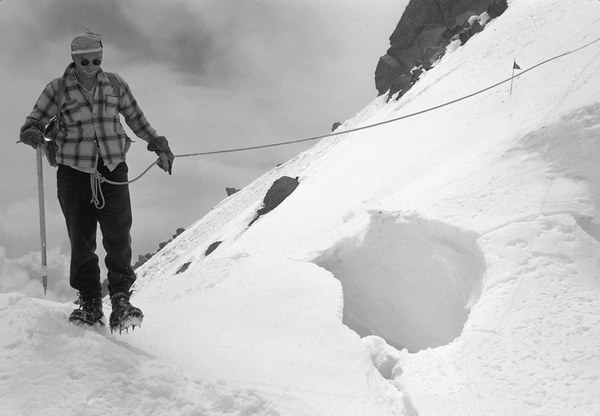 From The Mountaineers: A History.
From The Mountaineers: A History.
Main photo: Hiker ascending snow finger with bridge, by Nate Brown.
Add a comment
Log in to add comments.One comment on point 3. Poking a snow bridge with a hiking pole, particularly one with a snow basket, can easily give you a false sense of security. The amount of force you can exert with a pole will not approach the amount of force your body weight over your foot will exert the moment you try to cross the bridge you think is safe. Instead, use an ice axe, avalanche probe or pole *without* a snow basket to probe the depth of the bridge. Where ever the resistance suddenly stops is the likely thickness of the bridge, which can give you a better sense of whether it is safe to cross.
In addition to #3 and #4. When being the first to cross. I've stomped down on the snow with one foot without actually putting weight onto it. Once across, I've had people re-use the same steps.
 Nathaniel Brown
Nathaniel Brown